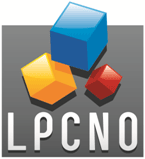Pull-Off of adhesive viscoelastic solids
MATERIAL AND SURFACE SCIENCE

Lab: LPCNO
Duration: NanoX master Internship (8 months part-time in-lab immersion)
Latest starting date: 01/12/2022
Localisation: Nanotech, LPCNO
INSA Toulouse
135 Avenue de Rangueil
31077 Toulouse, Cedex 4
Supervisors:
Simon RAFFY, Dr raffy@insa-toulouse.fr
Work package:
Solid viscoelastic materials are commonly used for adhesion (ex: adhesive tape, reversible sealing for microfluidic [1, 2], etc.). They exhibit simultaneous viscous and elastic characteristics. In the case of solid-viscoelastic rubbers, their solid behavior is a consequence of their crosslinked polymer network which can elastically recover once an applied force is stopped. Furthermore, its liquid behavior is due to a flow between macromolecules and give a viscosity dependent flow rate when stress is applied. It adds a time dependent trend on the stress-strain relationship. If a viscoelastic adhesive material is tearing very fast, it acts as a solid. On the other hand, for low pulling rate, all the viscous components are relaxed. Between those two domains, the response is a combination of the viscous and elastic behaviors. This velocity dependence is not experimentally studied in the literature [3, 4] which results in non-comparable and partial measurements. Exploring the pull-off dynamics of adhesion with a wide range of pulling rates will lead to a new methodology for viscoelastic adhesion measurements. The results obtained in this study will be compared with theoretical models [5] to get an experiment/model convergence.
The experiment will be:
Casting viscoelastic samples
Create and modify measuring program (Labview or python)
Measure pull-off forces
Adapt the set-up to go near the theorical model
Mechanical properties and shape of the adhesive sample
Size of the indenter to stay in the working range of the machine
References:
1 - Raffy, S.; Palleau, E.; Ressier, L. Reversible Microfluidic Chip. WO 2020084255 A1, 2020
2 - Raffy, S. et al. ACS Appl. Polym. Mater. 2021, 3, 801– 810
3 - Aiva Simaite and Matthew Spenko. 2019 Bioinspir. Biomim. 14 046005
4 - Perrin, H. et al. Soft Matter, 2019,15, 770-778
5 – Müser, H. M. and Persson, Bo N. J. EPL, Volume 137, Number 3, February 2022
Areas of expertise:
Solid mechanics, polymer, adhesion
Required skills for the internship:
Background in materials science with knowledge on polymer’s physic.
